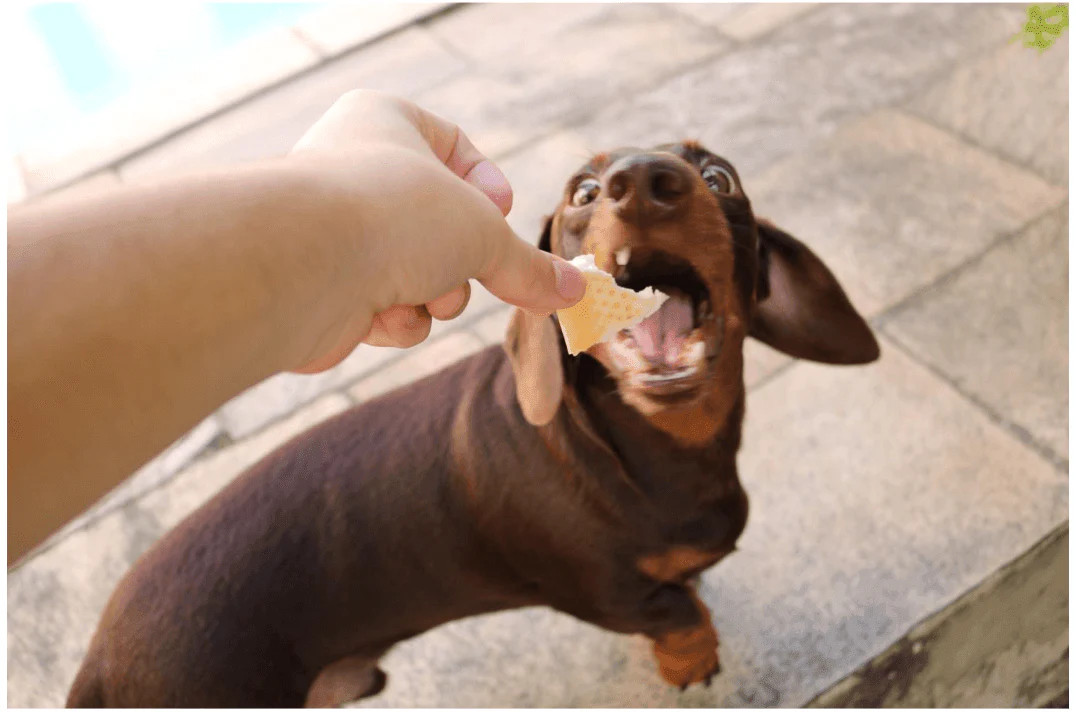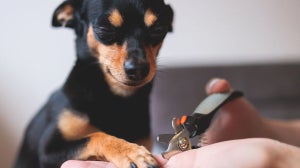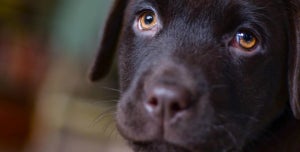
For humans, bread is a staple part of our diets. It’s delicious, it’s versatile and it’s a great source of energy. But is it something that our canine pals can enjoy too? In short, the answer is yes, dogs can eat bread safely in moderation, as long as it’s fully baked and doesn’t contain toxic ingredients like raisins, garlic, seeds or chocolate. Unfortunately, it’s not going to provide them with any nutritional benefits, so it’s not something we advise feeding your dog. But the good news is, if they get their gnashers on some, it’s unlikely to do them any harm. So does this mean dogs can eat seeded bread and sourdough bread too? Unfortunately not. Read on for more information on the types of bread that are safe for dogs, such as if dogs can eat garlic bread or buttered toast. We’ll also cover how much bread they can eat and potential risks to be aware of if your dog eats the wrong kind of bread or raw bread dough. You never can be too safe, when your pooch is likely to come across enticing bread scraps.
How much bread can a dog eat?
The answer to how much bread a dog can eat is just a small amount, as bread isn’t very nutritious but can be high in calories. For example, a chunk of bread roll or crusts from a slice of bread are fine, but it’s not recommended to give them a whole slice or roll to themselves. Eating too much bread can cause weight gain and stomach upset. If your dog is already overweight, bread should be kept to a minimum or not at all.
Is bread safe for dogs?
Yes, dogs can eat bread safely, as long as they’re not allergic to any of the ingredients and it’s only eaten in moderation. Dogs can eat brown bread and white bread, on the basis it is plain i.e. the bread does not contain toxic ingredients like seeds, chocolate, garlic, raisins or artificial sweeteners, and it is free from toppings like jam or butter. Types of bread dogs can eat:
White bread (plain)
Brown bread (plain)
Risks of feeding bread to dogs
While eating small amounts of plain white or brown bread shouldn’t do your dog any harm, like with us, eating too much of it can cause weight gain. Of course, that doesn't mean the temptation isn’t still there, so if your dog manages to eat a large amount of bread in one go, such as a whole loaf, it’s possible they could experience symptoms such as stomach upset, bloating and constipation. If they vomit or suffer from diarrhoea, we recommend getting them seen by a vet for advice on how to treat it. We also recommend calling your vet for their advice if your dog manages to eat bread that contains ingredients that are toxic for dogs, such as raisins, chocolate or onions.
Types of bread to avoid feeding dogs
While dogs can eat bread on occasion, there are types that should definitely be avoided. As mentioned earlier in the article, it’s important that your dog doesn’t eat bread containing ingredients that are toxic for dogs, such as raisins, chocolate, onions, garlic or artificial sweeteners, among other things. This means that if you’re wondering if dogs can eat garlic bread or if dogs can eat seeded bread, the answer is - sadly for them - a hard no. The garlicky scent of garlic bread is very likely to get them salivating and giving their best puppy dog eyes to win you over, but garlic can be toxic for dogs. Garlic bread is also likely to contain lots of fat from butter and oil, which isn’t good for them either. The reason why dogs can’t eat seeded bread is that while many seeds don’t necessarily cause harm to your dog, they aren’t very easily digested. Seeded granary bread can also often contain nuts that are toxic for dogs, such as macadamia nuts, pistachios or cashews. The answer to whether dogs can eat sourdough bread is also no. It’s a fermented dough that could produce alcohol in your dog’s system when ingested. This can be dangerous, so you should not allow your dog to eat sourdough bread. Types of bread dogs can not eat:
Garlic bread
Seeded bread
Sourdough bread
Bread containing toxic ingredients, e.g. raisins, chocolate, garlic, onion and artificial sweeteners
Avoid feeding raw bread to dogs
If dogs can eat brown bread and white bread when it has been baked, can dogs eat bread dough raw? The answer is a very firm no, as the raw dough can be incredibly dangerous for dogs. The yeast and sugar in the raw dough ferments in the stomach, which can cause gas and extreme bloating. In severe cases this can cause a rupture to the stomach, as well as cardiovascular trouble or damage to the diaphragm. Another risk of eating raw bread dough is alcohol poisoning caused by the fermentation process in the stomach. This can potentially be life-threatening for a dog and will require immediate treatment. If your dog does eat raw bread dough or you think they might have, be sure to get them to a vet as soon as possible.
Signs your dog has eaten raw dough:
Attempts at vomiting
Bloating
Disorientation and staggering
Weakness
Low body temperature
Depression
Seizures
Coma
Can dogs eat bread - FAQ's
Why do dogs love bread?
Dogs love bread for the same reasons we do. Not only is it tasty, but it contains naturally occurring sugars, which can make us want more of it (don’t we just know it!). It may also be because they like the fluffy, doughy texture, which is extremely different to the texture of the food they usually experience.
Can bread make a dog sick?
Yes, bread can make a dog sick if they eat a type of bread that contains ingredients that are toxic for dogs or if they eat too much of it. Eating more than a small amount of bread can cause vomiting, diarrhoea, or even a blockage, as the yeast can cause the bread to expand.This can require surgery to treat in some cases.
Can dogs eat buttered toast?
We don’t recommend feeding your dog buttered toast, because butter is high in fat and not a very healthy option for your dog. The high fat content can cause symptoms like diarrhoea, vomiting and bloating. This said, a small amount of buttered toast is unlikely to cause your pooch any harm, so don’t fret if they pinch a chunk off your plate. Like whether dogs can eat popcorn or not, it’s the toppings that can make the food item unhealthy for them, so it’s best to keep it plain if they do eat it, as dogs can eat plain brown bread and white bread safely. Hopefully this has answered all of your bread related questions - from can dogs eat garlic bread and can dogs eat seeded bread to is it safe for dogs to eat raw bread dough? So what’s the verdict? The answer is, dogs can eat white bread and brown bread in small amounts - and it must always be completely baked (not raw dough). Dogs cannot eat garlic bread, seeded bread, sourdough bread or breads containing toxic ingredients. All this said, bread isn’t recommended as a regular snack or part of your dog’s diet in any case. You can find out more about what dogs can and can’t eat in our article on the topic, as well as our other articles of types of food such as can dogs eat sweetcorn or cucumber.

Related Articles








